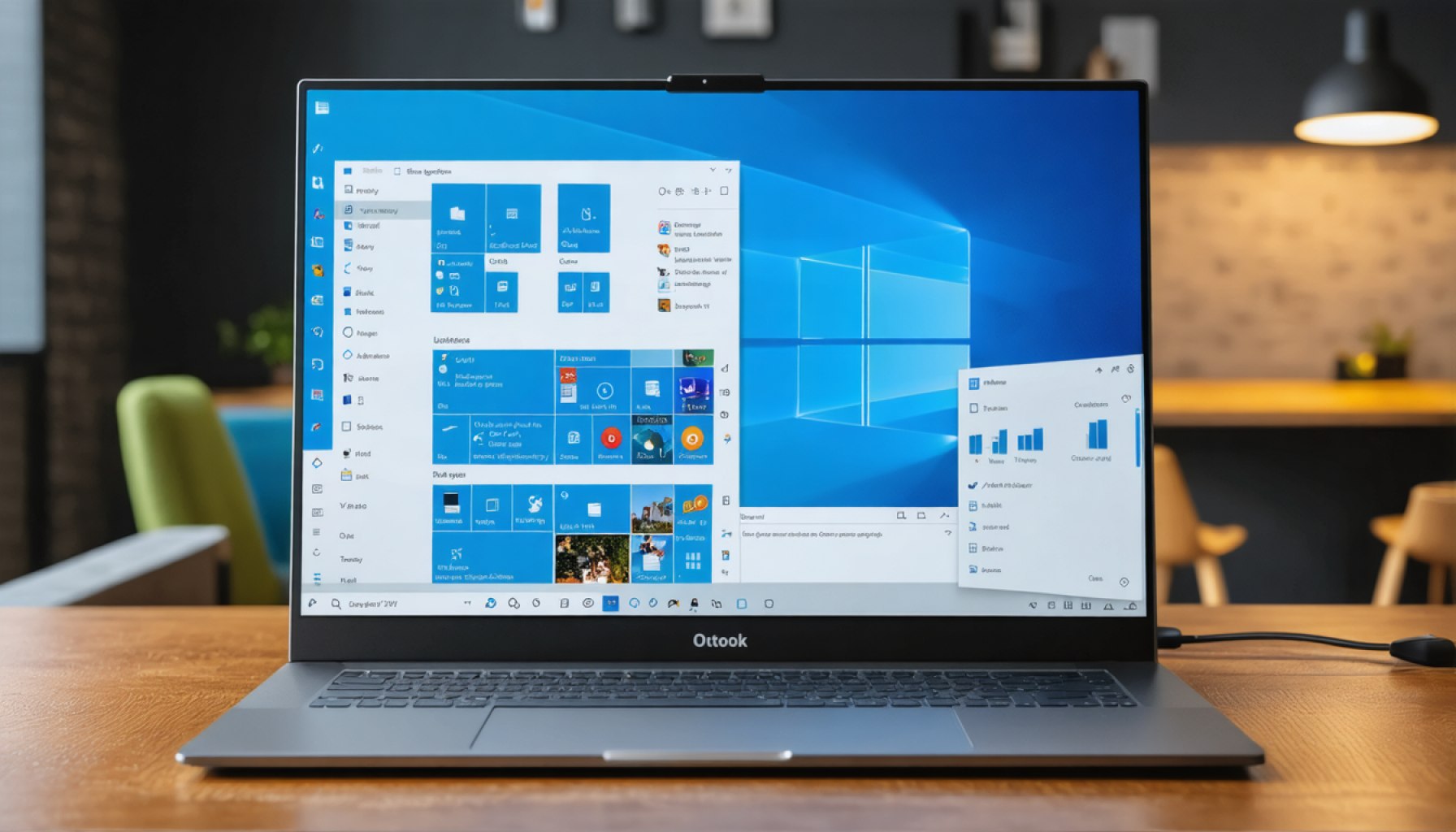- The recent Windows 10 patch update controversially replaced the Mail and Calendar apps with a new, slower Outlook client.
- Emails are now stored in the cloud, raising privacy concerns among users.
- The inclusion of advertisements in emails has further degraded the user experience.
- Users have responded by creating an unofficial tool to resist the change, illustrating widespread dissatisfaction.
- Alternatives, including customizable and open-source email clients, offer better privacy and user control.
- Users are encouraged to explore different email clients to regain control over their inbox experience.
Windows 10 users, anticipating enhanced features, instead find themselves grappling with frustration following the recent patch update. This update forcefully replaced the familiar Mail and Calendar apps with a revamped Outlook client, triggering waves of discontent among users.
The new Outlook, cloaked in promises of efficiency, moves like a slow giant. Its sluggishness contrasts starkly with the zippy predecessor it has replaced. Beyond the speed bump, a more alarming change surfaces: all emails now nestle not in local folders but ascend into the digital clouds. For privacy-conscious users, this shift rings warning bells as loudly as church bells on a Sunday.
Advertising interspersed within emails further muddies the waters. Users, once reading through clean inboxes, now navigate a maze of promotional content, dampening the user experience significantly.
In defiance, the community has rallied, fashioning an unofficial tool to block this unwanted Outlook interloper. This grassroots response underscores a growing dissatisfaction with the direction Microsoft has taken.
But is there a silver lining in this clouded scenario? Absolutely. Alternatives abound. The market offers a spectrum of email clients packed with customization options and intuitive designs. Open-source software emerges as a beacon of hope, promising greater privacy and transparency—a true refuge for those yearning to reclaim control over their information.
For those unsettled by their data dwelling among the clouds, exploring other email clients could prove liberating. As users reassess their online priorities, the message is clear: Your inbox is yours to command.
Discover Alternatives: Reclaim Control Over Your Email Experience
How-To Steps & Life Hacks: Transitioning to Alternative Email Clients
If you’re a Windows 10 user dissatisfied with the new Outlook client, here’s how you can seamlessly transition to alternative email clients:
1. Identify Your Needs: Assess what you need from an email client—privacy, speed, customization, or integration with other tools.
2. Research Alternatives: Some popular alternatives include Mozilla Thunderbird, eM Client, and ProtonMail, known for user-friendly interfaces and robust security.
3. Download & Install: Visit the official websites to download and install your chosen client. Ensure it’s the latest version to benefit from updated features and security patches.
4. Account Setup: Follow the setup wizard to add your email accounts. Most clients support major email services with simple setup instructions.
5. Customization: Explore customization options. Adjust layout, themes, and notification preferences to tailor the experience to your liking.
6. Import Data: Most email clients allow data import from Outlook. Use the import feature to transfer emails, contacts, and calendar events.
Real-World Use Cases
– Mozilla Thunderbird: Ideal for those seeking a powerful, customizable open-source client. It supports add-ons and extensions, allowing users to enhance functionality.
– eM Client: Best suited for users needing a business-ready client with features like email tracking, contact management, and calendar integration.
– ProtonMail: Offers end-to-end encryption for users highly concerned with privacy, ensuring emails are secure and private.
Market Forecasts & Industry Trends
The demand for alternative email clients is on the rise. With increasing concerns over privacy and data control, more individuals and businesses are opting for clients that offer security and transparency. According to a report by Statista, the number of email users worldwide is set to grow to 4.48 billion by 2024, highlighting the expanding market for email solutions.
Reviews & Comparisons
– Mozilla Thunderbird: Praised for its add-on support and privacy features. However, it lacks built-in strategies for teams unless paired with third-party tools.
– eM Client: Highly rated for its intuitive design and powerful features but is a premium solution that may not suit all budgets.
– ProtonMail: Revered for its privacy-first approach, though some users might find its limited features less accommodating.
Controversies & Limitations
– The forced transition to the cloud on Outlook might violate user preferences for data storage. Moreover, integrating advertising within the inbox compromises user experience.
– Alternatives like ProtonMail can be complex for users unfamiliar with encryption technologies.
Pros & Cons Overview
Pros:
– Alternatives offer stronger privacy and customization.
– Many clients are open-source, ensuring transparency and regular updates.
Cons:
– Transitioning requires time and management of existing data.
– Some solutions might involve additional costs or technical steps for full integration.
Insights & Predictions
Experts predict an increase in demand for privacy-focused email solutions. As the digital landscape shifts towards protecting personal data, email clients that prioritize security will continue to see growth.
Actionable Recommendations
1. Explore Alternatives: Try different email clients to find one that best meets your needs.
2. Prioritize Security: Choose clients that offer encryption and privacy features, especially if handling sensitive information.
3. Utilize Open Source: Consider open-source options for transparency and community-supported enhancements.
By retaining control over your email environment, you ensure a more efficient and personalized digital correspondence experience. For more insights into the best tech solutions for your daily needs, visit the official Microsoft or Mozilla sites.
